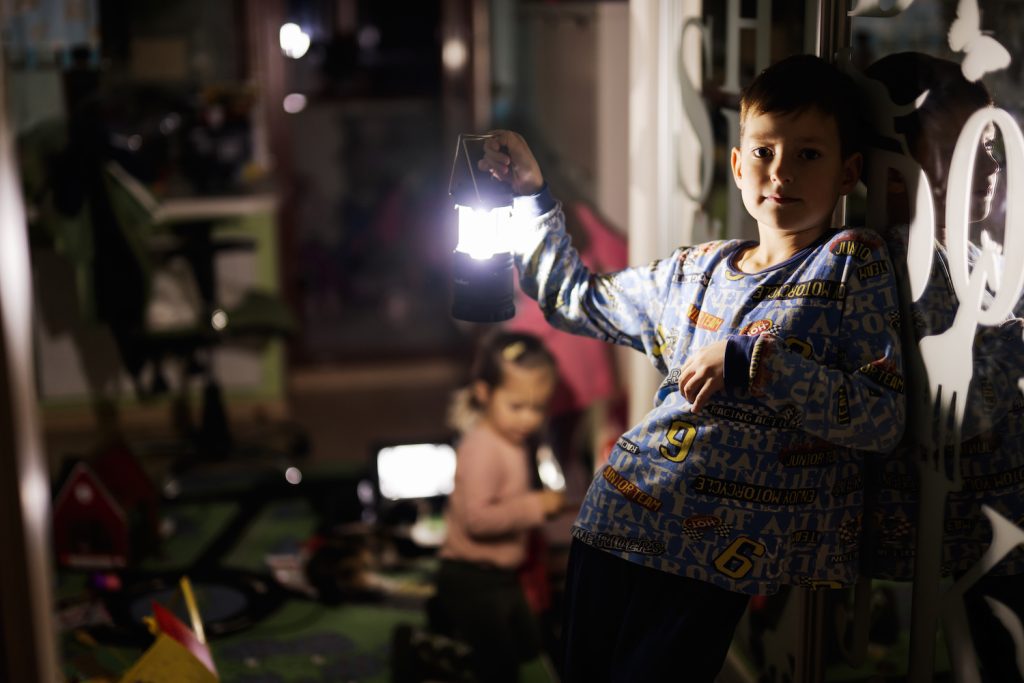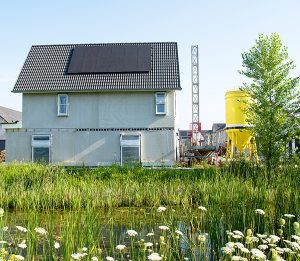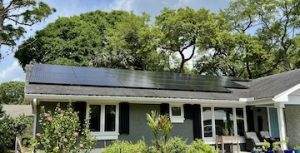As we experience more extreme weather effects of climate change, consider how we can make our homes and businesses more resilient. Leveraging independence from the grid and providing power during outages is one of the benefits of solar energy in disaster resilience. Traditional power systems rely on a centralized grid, which can be vulnerable to damage during extreme storms, leading to widespread power outages. Solar energy systems, however, can provide power even when the grid is down.
This is particularly useful in emergencies where access to electricity is critical for communication, medical equipment, and lighting. Additionally, solar energy systems can be designed to be portable and easy to deploy, allowing them to be quickly set up in emergency shelters or other temporary locations. However, it is essential to note that solar energy systems can also experience damage or outages during extreme storms.
Therefore, energy diversification is necessary to ensure a resilient power supply; this can include using backup generators or batteries, or incorporating other forms of renewable energy, such as wind or hydropower, to ensure a reliable power supply during emergencies.
Solar power can provide a reliable energy source during a disaster when other forms of power are unavailable.
There are several advantages to incorporating solar energy in disaster energy resources. One of the benefits is independence from the grid and the ability to provide power during outages. Traditional power systems rely on a centralized grid, which can be vulnerable to damage during extreme storms, leading to widespread power outages. Solar energy systems, however, can provide power even when the grid is down; this is particularly useful in emergencies where access to electricity is critical for things like communication, medical equipment, and lighting.
Another advantage of solar energy in disaster situations is its portability and ease of deployment. Solar panels and inverters can be easily transported and set up in emergency shelters or other temporary locations, allowing for quick and efficient deployment in emergencies. Solar can be especially useful in remote or hard-to-reach areas where traditional power infrastructure may be absent.
In addition to being independent and portable, solar energy systems require low maintenance and a long lifespan. Solar panels have no moving parts and require minimal maintenance, making them a reliable and cost-effective power source. Solar panels can last for 25-30 years with proper installation and maintenance, providing a long-term power solution for disaster-stricken areas.
Overall, solar energy offers a reliable and efficient solution for providing power during emergencies. Its independence from the grid, portability, and low maintenance make it a valuable asset in disaster resilience. As a solar contractor, I recommend considering solar energy as a part of any disaster preparedness plan.
Examples of Solar Energy in Disaster Resilience
Numerous solar energy strategies are used in disaster resilience, showcasing their effectiveness in providing power during emergencies. One notable example is the use of solar-powered microgrids in Puerto Rico after Hurricane Maria. The devastating impacts of climate change in the form of the hurricane caused widespread power outages, leaving many communities without electricity for months. A solar microgrid can be quickly deployed to provide power to these communities, helping to restore energy security and support disaster recovery efforts.
Another example of solar energy used in disaster resilience is solar-powered water pumps for disaster relief in remote areas. Access to clean water is critical in many emergencies, but
traditional power infrastructure may be absent in the affected area. Solar-powered water pumps can provide a sustainable and reliable solution for providing clean water in these situations. In addition, solar water pumps not only support people’s basic needs but can also help prevent the spread of disease.
Solar energy is also being used in disaster recovery housing, providing power to temporary housing for those displaced by emergencies. Solar panels can be easily installed on the roof of these structures, providing power for lighting, appliances, and other essential needs.
Overall, these examples demonstrate the versatility and effectiveness of solar energy in disaster resilience. Its ability to provide power during emergencies, regardless of traditional power infrastructure, makes it a valuable asset in addressing the impacts of climate change and supporting communities during and after emergencies.
Considerations When Considering Solar for Community Resilience
While solar energy can provide significant benefits for disaster resilience, potential challenges must be considered. One of the main challenges is the initial cost of installing solar energy systems. The cost of solar panels, inverters, and other equipment can be noteworthy, and this can be a barrier for specific communities already struggling financially. However, this cost can be mitigated by government incentives and other financial support mechanisms such as tax credits, grants, and loans.
Another challenge of using solar energy for disaster resilience is predicting and planning for
energy needs during a disaster. In emergency situations, where the electric grid is strained, energy needs can vary widely and be difficult to anticipate. Energy supply versus demand can make it challenging to ensure that the deployed solar energy systems are adequate to meet the needs of the affected community. However, by working closely with emergency management officials, solar energy experts can better understand the specific energy needs during a disaster. They can tailor solar energy systems to meet those needs.
Potential solutions to these challenges include government incentives and community-owned solar projects. Government incentives can offset the initial cost of installing solar energy systems and make them more affordable for communities and organizations. On the other hand, community-owned solar projects can provide a way for communities to collectively invest in and own solar energy systems, making them more accessible and sustainable in the long term. In addition, such projects can be designed to accommodate emergency needs and be a source of community pride.
Final Thoughts
In conclusion, using solar energy for disaster resilience can provide several benefits. Its independence from the grid, portability, and low maintenance make it a valuable asset in emergency response during natural disasters, providing backup power when a traditional power supply is disrupted. The examples of solar-powered microgrids in Puerto Rico after Hurricane Maria, solar-powered water pumps in remote areas, and solar energy in disaster recovery housing have demonstrated their versatility and effectiveness in providing power during emergencies.
However, potential challenges must be considered, such as the initial cost of installing solar energy systems and the difficulty of predicting energy needs during a disaster. Government incentives and community-owned solar projects can mitigate these challenges.
Considering solar energy as part of a comprehensive disaster preparedness plan is crucial. By incorporating solar energy into emergency response efforts, communities and organizations can ensure that they have a reliable and sustainable power supply during and after natural disasters. As a solar contractor, I recommend considering solar energy as a part of any disaster preparedness plan.





